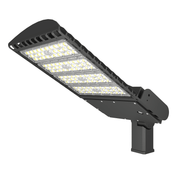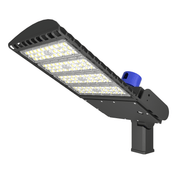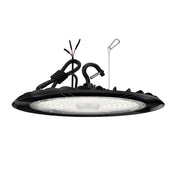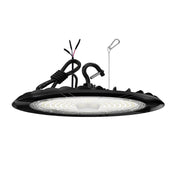Driven by Industry 4.0 and the global carbon neutrality goal, the high bay light industry is undergoing a revolutionary transformation from traditional lighting to intelligent and sustainable lighting. As a cross-border e-commerce company deeply involved in the field of industrial LED lighting, we have observed that this market, worth more than 10 billion US dollars (according to Grand View Research, the compound growth rate will reach 8.2% from 2023 to 2030) is reshaping the global supply chain. Chinese manufacturing companies are at the core of this change.
Structural changes in global market demand
1. Upgrading rigid demand driven by policies
The new EU ERP 2023 regulation raises the energy efficiency threshold for industrial lighting to 140lm/W, and the US DLC 5.1 standard requires the TM-21 lifespan of lamps above 200W to exceed 100,000 hours. Such mandatory policies push overseas buyers to shift from pure price orientation to technical compliance priority, and Chinese manufacturers need to build a full-link certification system (CE/UL/DLC/ISO9001, etc.).
2. Explosive demand for intelligent scenarios
The purchase volume of intelligent industrial and mining lamps equipped with microwave radar + PLC dimming system by large logistics centers in North America increased by 210% year-on-year (Navigant Research 2023 data), requiring lamps to have:
- Dynamic illumination adjustment (0-100% stepless dimming)
- Equipment-level energy consumption monitoring (compatible with Modbus/BACnet protocol)
- Fault warning system (MTBF>100,000 hours)
3. Differentiation of regional markets
- North American market: Prefer 120- 277V wide voltage design, UL certification + IP65 protection as standard
- European market: Under the guidance of the circular economy, a modular structure is required (easy disassembly, recycling rate > 90%)
- Emerging markets in Southeast Asia: Demand for explosion-proof certification (ATEX/IECEx) and tropical climate adaptability (working temperature -40℃~+55℃) surges
Building a competitive barrier for technological innovation
1. Breakthrough design of thermal management system
Using a 3D vapor chamber temperature plate + nano-ceramic coating technology, the 200W lamp can maintain a junction temperature of ≤85℃ at an ambient temperature of 60℃, 30% longer than the traditional aluminum fin heat dissipation solution.
2. Breakthrough in the limit of photoelectric conversion efficiency
Through the collaborative design of COB integrated light source and hyperbolic secondary light distribution lens, the system's light efficiency of 190lm/W is achieved, and with the anti-glare solution of UGR<19, it meets the lighting needs of precision manufacturing workshops under the EN 12464-1 standard.
3. Building a digital service ecosystem
Developing a supporting Lighting Management System (LMS) cloud platform that supports energy consumption analysis, lamp life prediction, fault geolocation and other functions, helping overseas customers reduce the Total Cost of Ownership of lighting systems by 42% (based on actual project calculations).
Innovation of cross-border e-commerce operation strategy
Content reconstruction of technical marketing
- Establish product technology white paper system: including IES files, L70 life test reports, TM-21 estimated data
- Create a VR virtual exhibition hall: immersive display of illumination distribution simulation of lamps in 10m/15m floor height scenes
- Develop BIM model library: provide Dialux evo optical simulation file download to lower the threshold for engineers to select models
Agile response mechanism of the supply chain
- Establish a distributed warehousing network: 72-hour emergency replenishment in bonded warehouses in the United States/Germany/Middle East
- Modular production system: supports customized combination of electrical parameters (voltage/interface) and optical parameters (color temperature/light distribution)
- Quality traceability system: each lamp has a built-in unique digital ID, which can be traced back to chip batch and aging test data
Extension of the value of localized services
- Technical training plan: provide dealers with ETAP/AGi32 optical design software operation certification
- Establish overseas service center: equipped with a team of on-site engineers holding ETL certification
- Carbon footprint service: provide product EPD environmental declaration and assist customers in applying for LEED certification points
Future strategic opportunities for the industry
Energy as a Service (EaaS) model
Cooperate with overseas energy companies to carry out Lighting-as-a-Service business, and create a continuous income stream through sharing the electricity bills saved by intelligent transformation. Verification of a North American cold chain warehouse project: the investment payback period is shortened to 2.3 years.
Integrated application of digital twin technology
Integrate the sensor data of lamps into the factory digital twin system to realize the intelligent linkage between the lighting system and production equipment and environmental monitoring, and has been successfully applied in semiconductor clean workshops.
Disruptive innovation in materials technology
The mass production application of graphene-based heat dissipation materials reduces the weight of lamps by 40%, and cooperates with 3D printing technology to achieve ultra-personalized structural design to meet the needs of special scenarios such as cultural heritage buildings.
Conclusion:
In the wave of digital transformation of industrial lighting, cross-border e-commerce companies need to evolve from product suppliers to industry solution designers. By building a trinity business model of "smart hardware + digital services + sustainable value", Made in China is redefining the competition rules of the global industrial and mining lighting industry. We sincerely invite global partners to explore this new blue ocean full of technical challenges and business opportunities.








